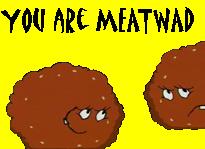 Daryll E. Ray, who has a lot of titles at the University of Tennessee, writes in an op-ed promoting irradiation that,
Daryll E. Ray, who has a lot of titles at the University of Tennessee, writes in an op-ed promoting irradiation that,
"The most immediate thing a consumer can do is to make sure that all of the hamburger that they serve is cooked to a minimum of 160 degrees F and that they observe sanitary precautions in the handling of meat and meat products.
"On a recent trip, one of us ordered a hamburger at a major restaurant chain-the cooking instructions was “medium.” When the hamburger arrived at the table it was not just pink inside, it was raw. Being polite, we went ahead and ate the burger."
Like so many food safety gurus, Ray is preaching one thing and doing another. And like a lot of public policy types, he talks a good game but doesn’t really say anything. And certainly doesn’t do anything.
Fifteen years after Jack-in-the-Box, it’s time to stop being polite. Only if consumers demand safe food will the corporations — or mom-and-pop burger shops — actually pay attention and deliver. Ask hard questions. Demand safe food. And help create a culture that values safe food.
Here are some examples:
 During the halfway point of a food safety golf tournament in Baltimore in 2005, a burley, 50-ish goateed he-man requested his hamburger be cooked, "Bloody … with cheese."
During the halfway point of a food safety golf tournament in Baltimore in 2005, a burley, 50-ish goateed he-man requested his hamburger be cooked, "Bloody … with cheese."
His sidekick piped up, "Me too."
I asked the kid flipping burgers if he had a meat thermometer.
He replied, snickering, "Yeah, this is a pretty high-tech operation."
The young woman taking orders glanced about, and then confided that she didn’t think there was a meat thermometer anywhere in the kitchen; this, at a fancy golf course catering to weddings and other swanky functions along with grunts on the golf course.
We ordered the burgers well-done.
Two iFSN researchers went to a local restaurant and ordered a hamburger. When asked how we would like them done, Doug asked, "What temperature is well-done?"
The server replied, "All our burgers are well-done unless the customer specifies."
The burger came out dripping blood, and still cold. So even though color is a lousy indicator of doneness, the burger was returned. And a lesson was given on doneness of burgers.
A graduate student and I were recently in Seattle, home of the infamous 1993 Jack-in-the-Box outbreak of E. coli O157:H7 that sickened some 600 and killed four, and put microbial food safety firmly in the minds of American media, lawyers and even the President.
After arriving at the hotel in Seattle and wandering around a bit, we ended up back at this rather posh hotel. Upon ordering burgers, we were asked how we would like them, "Rare, medium, well-done?" We looked at each other, and I asked if they ever used a meat thermometer. The waiter looked befuddled.
We both ordered well-done.
